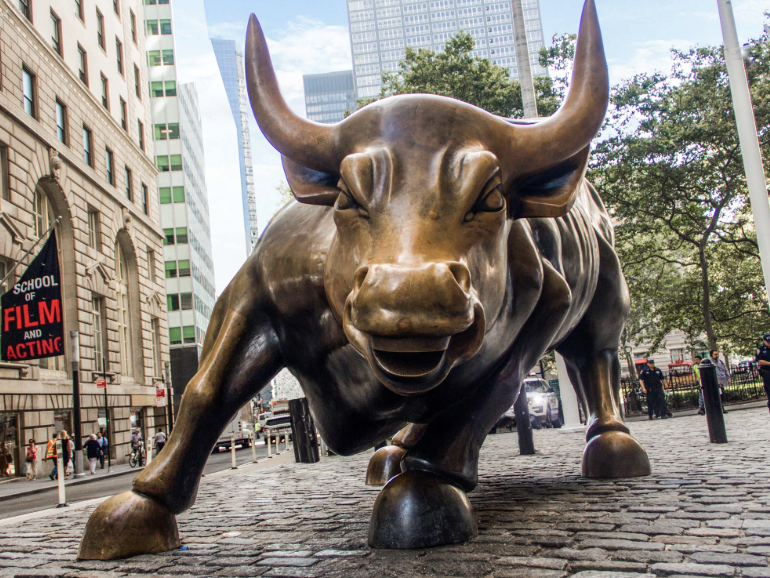Wall Street, often seen as the heartbeat of global finance, has long been a hub of ingenious, yet at times controversial, financial products. While innovation drives progress, there can be a fine line between creativity and unethical behavior. One such practice that has recently come under the microscope involves floorless convertible securities, a type of financing that has garnered the nickname “toxic finance” on the trading floors. Let’s unravel what this means, its impacts, and why it is drawing scrutiny from regulatory bodies like the SEC.
Understanding Floorless Convertible Securities
To grasp the essence of toxic financing, it’s crucial first to understand what floorless convertible securities are. These are a type of convertible bond that does not have a fixed conversion price. Instead, the conversion price is tied to the market price of the underlying stock at the time of conversion. While this setup can sound beneficial, offering flexibility to investors, it also harbors potential risks.
The Structure and Appeal
Floorless convertibles are appealing because they grant investors the right to convert bonds into equity at a price that can adjust downward with the market. This limits the downside for the investor but can have dire consequences for the issuing company. Here’s why they might be attractive:
- Risk Minimization: For investors, these securities offer a way to hedge against the risk of falling stock prices.
- Potential Upside: Investors can benefit from stock price surges without committing to a high conversion price.
- Immediate Capital Access: Companies in dire need of funding find this as a quick route to liquidity.
The Pitfalls and Risks of Toxic Financing
The allure of flexible bonds can be deceptive. The risk factors associated with floorless convertible securities are manifold, often resulting in a vicious cycle that can devastate issuers.
Stock Dilution
Stock dilution is perhaps the most significant danger posed by these securities. When investors convert their bonds into equity, the company has to issue new shares, increasing the total share count. This dilutes the value of existing shares, negatively impacting existing shareholders and potentially leading to a falling stock price.
Downward Price Spiral
When issuers’ stock prices start to fall, the dynamism of the conversion price further accelerates the decline. This vicious cycle is often referred to as the “death spiral” because it can lead to a rapidly declining share price and can potentially wipe out shareholder value.
Reputational Damage
Though financing solutions can temporarily aid cash-strapped businesses, reliance on floorless convertibles can signal dire financial health to the market. Continuous use or the resultant stock performance can erode trust and sully a company’s reputation.
The Role of Regulatory Bodies
Given the potential for abuse and adverse impact on investors and companies alike, the Securities and Exchange Commission (SEC) has taken a vested interest in scrutinizing floorless convertible securities. The regulatory framework is critical to protect stakeholders from the undue risks associated with these financial instruments.
Investor Protection
The SEC’s primary goal is to safeguard investors. Monitoring the issuance and implementation of such convertible securities ensures that investors are not misled.
Enforcing Transparency
Transparency is crucial for the health of financial markets. The SEC mandates clear disclosures for all convertible securities, including conversion terms and the potential consequences on stock valuations.
Confronting the Ethical Dilemma
A central concern around floorless convertible securities is their ethical implications. Critics argue that these instruments can be tools for exploitation rather than genuine financial aids. The hidden dangers can lure uninformed businesses into a trap that results in significant financial distress.
Responsible Financing Practices
Financial institutions and companies are encouraged to maintain ethically responsible practices. It’s imperative to evaluate:
- Long-term Impact: Will this decision benefit all stakeholders in the long run?
- Sound Financial Health: Is the company resorting to these due to temporary cash flows or deeper financial issues?
- Investor Awareness: Are the potential risks clearly communicated to all investors?
Aligning Interests
Companies should be wary of financing solutions that misalign the interests of issuers and investors. A successful financial strategy must incorporate solutions that create value rather than erode it over time.
The Path Forward
While innovative financial instruments like floorless convertibles can boost business, it’s crucial that both investors and companies approach with caution. Education around these securities is vital, allowing stakeholders to make informed decisions.
Moreover, as regulatory agencies continue to evolve their oversight frameworks, it’s essential for the financial industry to remain committed to transparency and ethical practices. Companies need to carefully weigh the advantages of immediate liquidity against the potential long-term repercussions on shareholder value and corporate reputation.
Toxic financing is a reminder of the balance between innovative financial products and ethical responsibility. As we move forward, it’s the companies and investors who prioritize transparency, education, and ethical practice who will steer safely through Wall Street’s ever-evolving landscape.



